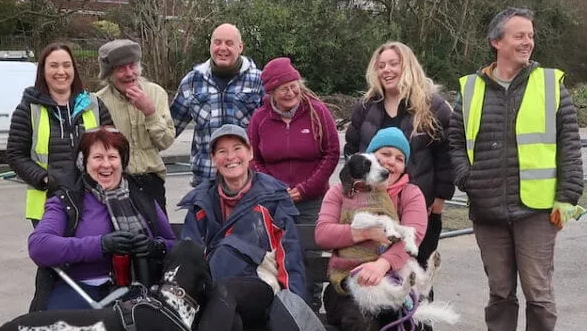Taking the fear out of flooding

Flooding is the UK’s most serious natural hazard with a shocking one-in-six homes in the UK at risk. And yet, just two-in-five people believe their local community is prepared for a flood, according to the National Preparedness Commission. With more and more severe weather events, this lack of preparedness only adds to the fear of flooding.
But it doesn’t have to be this way and we don’t have to be or feel so unready. Building community resilience is vital. People can get tired of hearing the word ‘resilience’ but another word for the same thing is aptitude – that comes from the attitudes, habits and actions that we collectively share.
So, what does this look like in terms of flood resilience?
Rising water levels
There are a host of things we can do inside our homes. Mary Long-Dhonau OBE, more commonly known as ‘Flood Mary’, expands on this opportunity in the Carbon Copy Podcast episode about taking flood action:
“The average person who hasn’t made (flood) adaptations can be out of their home for about nine months (following a flood). In 2007, many people were out for two years because of the sheer volume of properties that were flooded. But people that have made adaptations, for instance, waterproof plaster, perhaps plastic skirting boards, taking tiles up the wall, solid flooring, electric sockets up the wall, waterproof plaster and plaster board, and waterproof kitchens as well… the people that have made these adaptations: the flood water comes in, they pump it out, light their fires, open windows and can carry on living there.”
It doesn’t stop with shoring up our home; to be ready for rising water levels we all have to think more widely about the area where we live. We tend to feel more protected as a community behind visible flood defences and barriers – flood relief channels, embankments and other artificial structures. Such ‘hard engineering’ plays an important role, but it tends to be expensive and is only part of the solution.
Natural flood defences
We can also surround ourselves with small and large-scale sustainable drainage systems (SuDS) and natural flood defences that work with nature to manage surface water. This kind of collective activity could involve making more permeable pavements and soakaways; planting trees and digging swales; creating rain gardens and green roofs; protecting local wetlands and upstream peatlands. Flood Mary recommends solutions in the outdoor space around properties too:
“My strapline is to work with nature rather than against it. If we literally pave over everywhere, we are encouraging flooding. But if we can do a little bit of greening up within our gardens: with water thirsty plants that can absorb the water… Trees as well can absorb an awful lot of water. Planting trees can reduce flood risk. I don’t think generally people realise that nature in this situation is very much your friend. I know we have busy lives and we don’t have time to mow lawns, but actually having a garden can make a huge difference.”
Flood Action Groups
And we can go one step further still, if we consider the notion that infrastructure is other people too. Our social lives and our connectedness to each other have as much to do with our readiness and response to flooding as any physical project. For example, two-in-five people living in high-risk flood areas have not signed up for flood warnings, primarily because they were unaware of the service or did not know how to sign up. Flood Action Groups are a great way for people to get to know their neighbours before the storm: to be better prepared ahead of time and better able to respond.
We can’t do this on our own and we don’t have to. For more ideas on some of the bigger local actions that we can take together, visit Take Flood Action.
Recommended from Carbon Copy
-

Copy These! 5 Big Local Ideas About Using Decentralised Energy
Communities around the UK are generating their own electricity - through solar, hydro and wind. But how can they ensure…
-
 Affordable Energy, Buildings & Places, Climate Action, Good Food, Greater Fairness, Health & Wellbeing, Less Waste, More Jobs, Strong Communities
Affordable Energy, Buildings & Places, Climate Action, Good Food, Greater Fairness, Health & Wellbeing, Less Waste, More Jobs, Strong CommunitiesCopy These! 5 Big Local Ideas About Creating A Community Hub
Learn how communities are reinvigorating once-forgotten spaces, to bring local environmental, social and economic benefits.
-

How to Choose a Sustainable Christmas Tree: Real vs Fake
As you’re gearing up for the festive season, the question of which Christmas tree to bring home might come up.…
-
 Food and Agriculture, Good Food, Greater Fairness, Health & Wellbeing, Less Waste, Thriving Wildlife
Food and Agriculture, Good Food, Greater Fairness, Health & Wellbeing, Less Waste, Thriving WildlifeCopy These! 5 Big Local Ideas About Creating A Food Partnership
We all need to eat, and a food partnership is a great way to create a stronger, more sustainable, more…